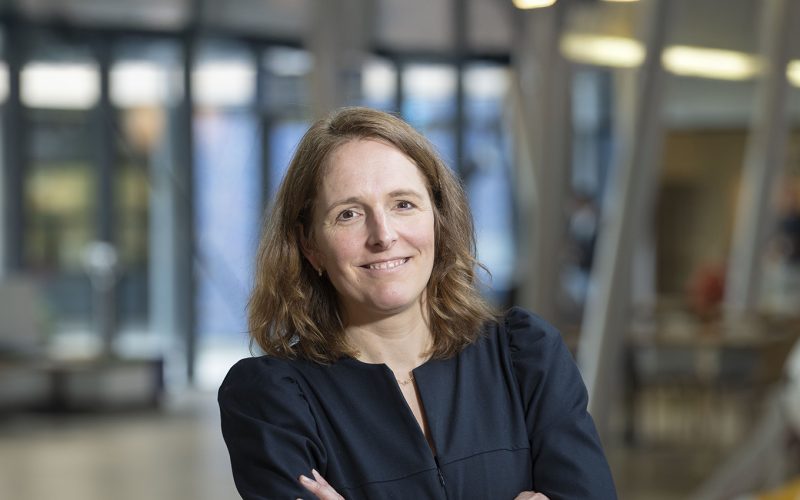‘High blood pressure during pregnancy? Then it makes sense to continue measuring blood pressure in these women annually after pregnancy,’ says Titia Lely. Titia is professor of maternal and child vascular disorders and she is committed to improving care for pregnant women with an underlying disease. For example, for women with kidney disease. They have a higher risk of complications such as high blood pressure, pre-eclampsia and preterm birth. She held her inaugural lecture on the 6th of November.
In the past, women with serious illnesses were often advised against getting pregnant. Especially if they had kidney disease, it was often seen as an impossible combination. But now gynaecologists and nephrologists say it is not impossible. However, it does have short- and long-term risks for both the woman and the baby. Scientific research is important for these women, so that they can make a well-informed choice about whether to become pregnant. The kidney disease and pregnancy clinic within UMC Utrecht counsels about eighty women with kidney disease every year. Of all pregnant women in the Netherlands, 10% are affected by vascular disease, affecting 17,000 women annually.
Titia: ‘In two per cent of these pregnant women, in addition to high blood pressure, there is protein loss in the urine or organ dysfunction, in which case you speak of preeclampsia. Although the cause of this is not completely clear, we do know that the placenta plays a central role. We also know that in women with pre-eclampsia, there is often an imbalance in the growth factors of the blood vessels.’ In the Netherlands, 7 to 8 per cent of all babies are born prematurely. Pregnants with an underlying disease are at increased risk of their baby being born before the due date. About half of preterm births are caused by vascular disease.
Titia Lely and her team want to develop therapies for these pregnancy disorders without causing side effects in the baby. Titia: ‘I am working with our team on treatments for the placenta with nanoparticles. These are tiny particles that move easily through tissues and can deliver drugs to specific sites. It is crucial that these particles reach the right cell type. We want to focus on trophoblast cells in the placenta because it consists of several cell types. In the future, we want to add gene therapy to the nanoparticles to intervene more specifically in vascular problems during pre-eclampsia. A big challenge is to make sure that the gene therapy gets into exactly the right cells.’
It has already managed to set up a surgical model for pregnancy hypertension (high blood pressure) and growth retardation, in the divisional laboratory, in collaboration with researchers Freek Hoebeek and Cora Nijboer. ‘This animal model will be used to study the effects on organ development,’ says Titia. ‘Both in the short and long term, and to evaluate therapies during and after pregnancy.’
With her background in both nephrology and obstetrics, Titia Lely is able to understand the interactions between the kidneys, vascular system and pregnancy, and she also knows better than anyone else how these systems influence each other. ‘To properly develop new therapies, a combination of preclinical models, placental perfusion studies, limited animal studies and models that estimate the dosage of a new therapy is essential,’ Titia says. ‘Broad collaboration between pharma and university centres is needed. Collaborations are needed to carry out therapy development step by step. Such a structured approach to therapy development in pregnancy does not yet exist, so there is still a world to win.’
